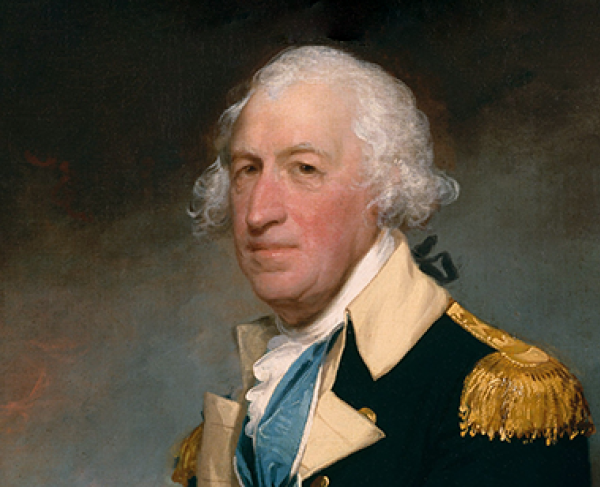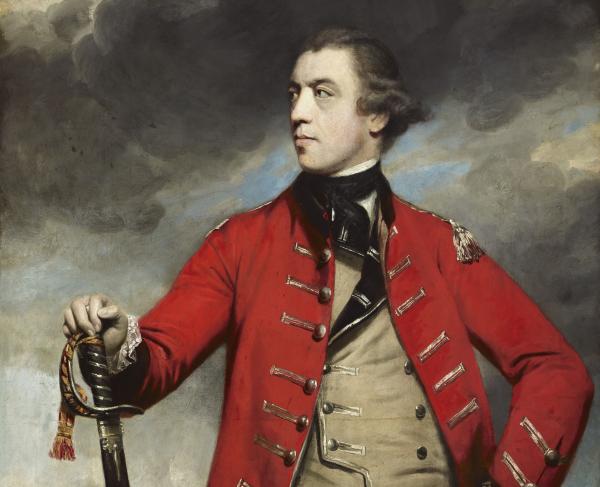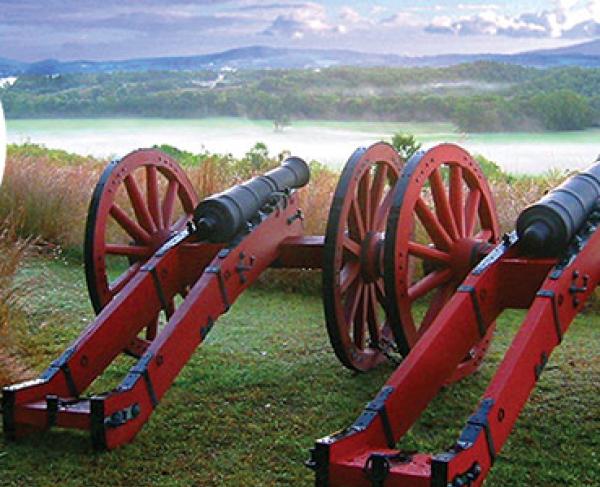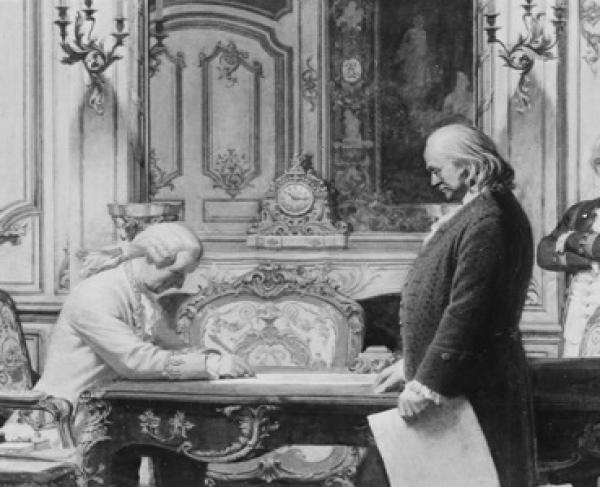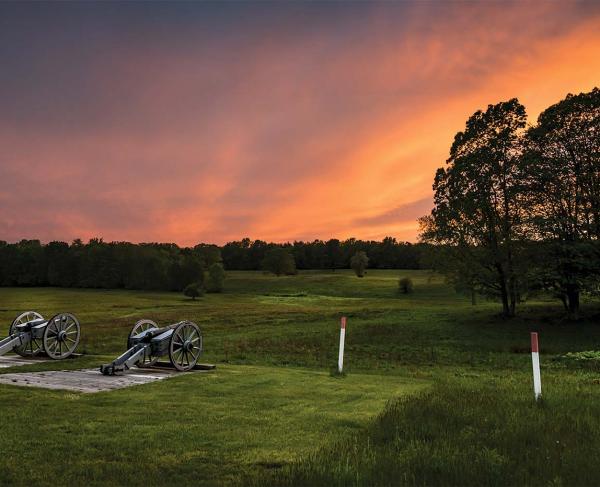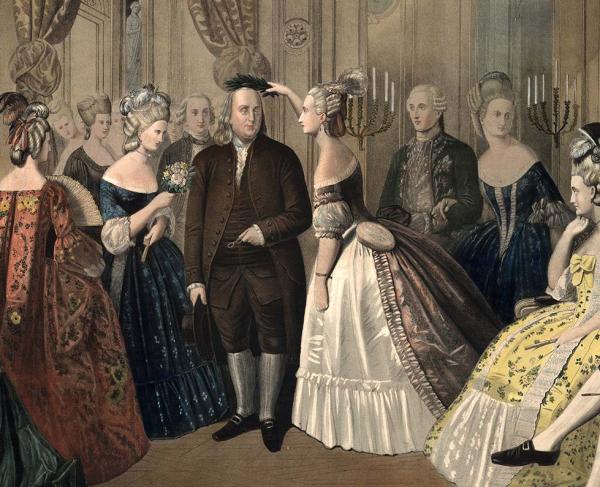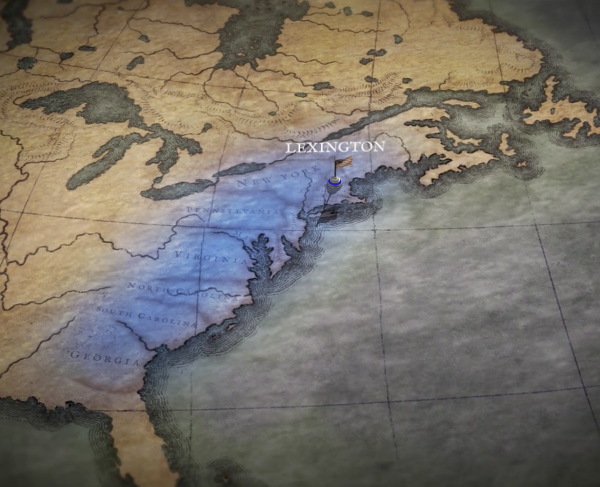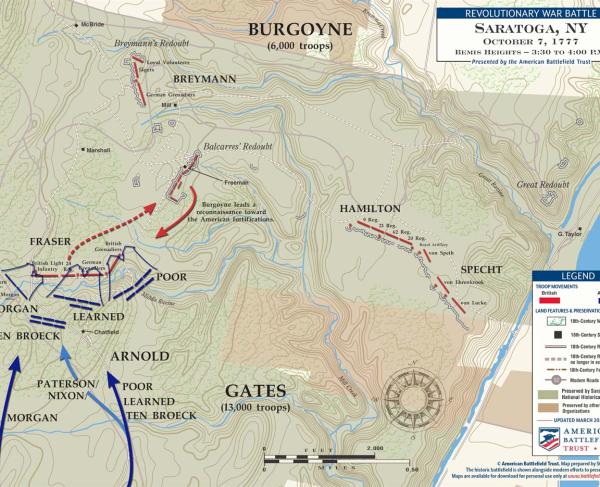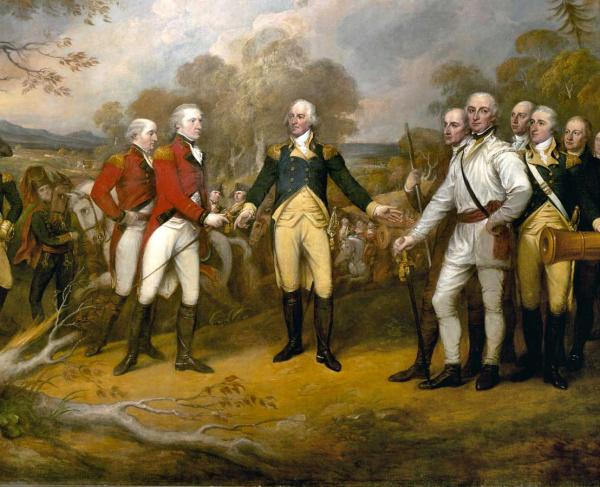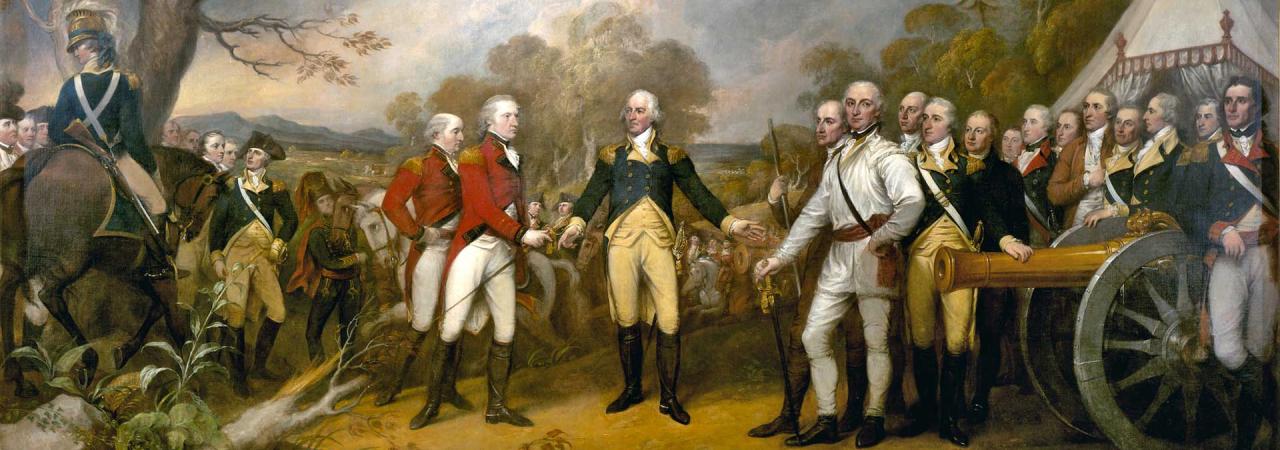
John Trumball’s famous painting “The Surrender of General Burgoyne” at Saratoga resides at the U.S. Capitol.
Saratoga
Freeman's Farm / Bemis Heights
New York | Sep 19 - Oct 7, 1777
The Battle of Saratoga was a turning point in the Revolutionary War. The American defeat of the superior British army lifted patriot morale, furthered the hope for independence, and helped to secure the foreign support needed to win the war.
How it ended
American victory. One of the most decisive American battles of the Revolutionary War, Saratoga ended British general John Burgoyne's attempt to control the Hudson River Valley. The outcome convinced the Court of King Louis XVI that the Americans could hold their own against the British Army, sealing the alliance between America and France. American general Benedict Arnold was hailed as a hero for his bravery on the battlefield, a reputation lost with his later betrayal and defection to the Royalists.
In context
In 1777, British strategy called for a three-pronged attack on New York, with three separate armies converging near Albany. For British general John Burgoyne, moving south from Canada with 7,500 men, the Hudson River Valley became the critical route for the invasion. By August, Burgoyne had captured Fort Ticonderoga, defeated fleeing American troops at Hubbardton (Vermont), and occupied Fort Edward, on the edge of the Hudson River. After a contingent of Burgoyne’s troops was defeated in the Battle of Bennington, his reduced forces marched south toward Saratoga in early September.
General Horatio Gates and his American soldiers had built formidable defenses on Bemis Heights, just south of Saratoga overlooking the Hudson. The two armies engaged in combat at Freeman’s Farm on September 19. While the British held off the Americans, their losses were great. Burgoyne’s battered forces dug trenches and waited for reinforcements, but none came. Burgoyne launched a second, unsuccessful attack on the Americans at Bemis Heights on October 7. With no means of escape, Burgoyne eventually surrendered to Gates on October 17. The victory persuaded France to sign a treaty with the United States against Britain. France’s financial and military support contributed to Washington’s victory at Yorktown in 1781, which effectively ended America’s War for Independence.
By mid-September, Burgoyne’s forces reach the northern outskirts of the small village of Saratoga. General Horatio Gates, commander of the Northern Department of the Continental Army, is ready with 8,500 men. He is supported by Gen. Benedict Arnold and by Col. Daniel Morgan, leader of 500 Virginia riflemen. To disrupt the British advance south, Gates has his troops erect defenses on the crest of Bemis Heights, a series of bluffs from which both the Hudson River and the road can be seen. From there, American artillery will have the range to hit both the river and the road. In order to attack, the British will have to use the road, as the forest and vegetation to the east are too dense to permit effective troop movements.
The Americans also erect a fortified wall a little less than a mile from Bemis Heights. The wall extends about three-quarters of a mile, creating a line shaped like a large "L". Twenty-two cannons are placed behind this defense, providing the Americans with ample artillery cover.
September 19. Burgoyne divides his army, numbering about 7,500, into three columns. He wants to use each column to probe American defenses. Col. Daniel Morgan's light infantry engages with the center column near Freeman’s Farm. It is a hotly contested fight, with the field changing hands several times. By evening, the British, reinforced by 500 German Hessians, hold the field, but the action has blunted their forward motion. Having lost almost 600 troops and expecting to be reinforced by Gen. Henry Clinton, coming from New York City, Burgoyne choses to dig in.
Until Clinton relieves them, British forces are literally trapped in the New York wilderness with scant supplies. Food stores dwindle, and the troops are reduced to half-rations. While the British remain stuck, the American army is replenished and grows to 13,000 strong.
October 7. The British are looking for a way out of their predicament. Burgoyne sends a reconnaissance force to attack Americans at Bemis Heights, but the patriots get wind of the plan and force the British to withdraw to their well-defended Balcarres Redoubt. Several hundred yards north is the Breymann Redoubt, defended by only 200 German soldiers and officers. It is no match for the Americans. With Gen. Benedict Arnold riding out in front to rally the troops, the patriots capture the redoubt. Arnold is seriously wounded in the left leg.
330
1,135
On October 8, the British army attempts to escape north, but a cold, hard rain forces them to stop and encamp near the town of Saratoga. Hungry, weary, and out of options, they dig in and prepare to defend themselves, but within two days the Americans have them surrounded. On October 17, after negotiations, Burgoyne's army surrenders.
After the British humiliation at Saratoga, Horatio Gates earns widespread public support and runs a brief clandestine campaign to replace George Washington as commander-in-chief of the Continental Army. The plot fails, and Washington maintains his post. The British army became prisoners of war. Burgoyne returned to England in the spring of 1778. He is severely criticized for his actions at Saratoga and receives no future commands in the British Army.
Impressed by the Patriots’ resistance to Britain, France signs a formal Treaty of Alliance with the Americans and the balance of the war tips in their favor. The Spanish and Dutch later provide support to the Americans as well, hoping to weaken British domination in Europe.
The name Benedict Arnold is synonymous with “traitor,” but before his betrayal of the patriots, he was an accomplished officer—although not always a happy one. At Saratoga, Arnold and his commander, Horatio Gates, had a difference of opinion about how aggressive to be in fighting off the British advance on September 19, 1777. Gates ordered his Northern Army to be patient and wait until the British got closer before launching a counterattack. Arnold argued that American troops must meet the column of British troops heading toward them. Arnold’s insistence, while perhaps not entirely welcomed by Gates, swayed his superior, and the patriots headed into battle. The Americans were able to inflict heavy casualties on the British that day, but the delay in the counterattack caused the Americans to fall back.
After their argument at Saratoga, Gates did not give Arnold the proper credit for his actions in the battle in his report to Congress. Arnold, who performed heroically in that and other battles, felt slighted by his treatment. Gates was hailed as “the hero of Saratoga,” which infuriated Arnold. He claimed that he had unjustly been passed over for promotion by the Continental Congress and that others took credit for his accomplishments. Although Washington rectified Arnold's squabble over rank after the battles at Saratoga. Arnold's marriage to Peggy Shippen, a Loyalist, in 1779, may have pushed the already angry soldier to abandon the patriot cause. In 1780, he defected to the British side, offering to hand over the American-held fort at West Point to the Redcoats for £20,000. Had his plot worked, the British would have controlled the Hudson Valley in New York and the war would have taken a different turn. Though exposed as a traitor, Arnold avoided capture and trial by the Continental Army and served as a British officer. He and Peggy eventually left the United States to reside in London.
The Conway Cabal was a group of senior Continental Army officers who conspired to remove George Washington from command of the army and replace him with Horatio Gates. Gates had a leading role in the plot, but the leader of the movement was Brig. Gen. Thomas Conway.
Trouble between Gates and Washington started after the Battle of Saratoga. Rather than inform his commander-in-chief of his victory, Gates notified Congress directly. Washington took offense and was further irritated when Gates did not promptly return troops sent to help Gates in his New York campaign. The relationship between the two men became more awkward when Gates became president of the Board of War in November 1777, effectively making him Washington’s boss. During this time, there was talk in Congress about replacing Washington with Gates.
Gates’s attempt to turn Congress against Washington was revealed in a letter from Thomas Conway, which was leaked by Gates’s adjutant, James Wilkinson, and relayed to Washington himself. The President of Congress, Henry Laurens, eventually saw the letter and exposed the Conway Cabal to his peers. Washington’s supporters rallied around him. Gates ended up apologizing to Washington and resigned from the Board of War. He then took command of the Southern Army, but was later removed for his role in the disastrous American defeat in the Battle of Camden.
Saratoga: Featured Resources
All battles of the Saratoga Campaign
Related Battles
15,000
6,000
330
1,135
